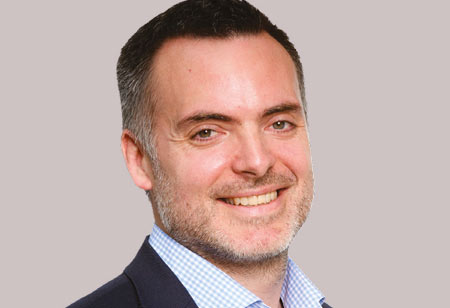

Thank you for Subscribing to Energy Business Review Weekly Brief

Matthieu Jaunatre is the Head of QHSE Europe at Ørsted, a global leader in offshore wind energy. With over 20 years of experience spanning nuclear, automotive and renewable industries, he has held various quality, health, safety and environment (QHSE) leadership roles across the full lifecycle of major energy infrastructure projects. Jaunatre began his career in civil and nuclear construction, developing expertise in stringent quality and safety standards. After transitioning to renewables in 2016, he now leads the QHSE function supporting Ørsted’s European wind farm development, construction and operations. An MBA graduate, Jaunatre blends technical knowledge with a passion for sustainable technologies and a people-first approach.
Through this article, Jaunatre shares his insights on the tremendous value and accelerated safety improvements that can be unlocked by offshore wind operators committing to proactively sharing remedies and lessons from incidents at their sites. What are some of the challenges that you have seen and currently see when it comes to safety? The offshore wind industry is still very young—you could argue the first major wind farms were built only a little over a decade ago. While we have gained valuable experience, a decade is not long in the grand scheme of developing comprehensive industry standards and best practices for quality, health, safety and environment (QHSE). Some countries have no existing legal framework for offshore wind farm construction and operations because it’s an entirely new industry for them. They have to start from scratch in defining safety regulations. And you can’t simply take standards from other sectors like oil and gas and directly apply them—the supply chains and processes are too different. One of the key challenges is helping these newcomer countries develop the right QHSE regulatory foundations before starting to build and operate wind farms there. We need to collaborate with local suppliers, regulators and policymakers to put the proper QHSE guidelines in place from the outset. But it goes beyond just regulations. We then have to provide extensive training to bring the local workforce up to those standards. Depending on the location, there can be a steep learning curve as we impart new skills and QHSE practices for offshore operations. The reality is our industry lacks the accumulated experience other sectors have benefited from over decades. We are building that collective knowledge in real time as we rapidly expand into new markets. And that inevitably exposes us to more risk in the short term before we have cemented best practices. The positive side is that the learning curve, while steep initially, does progress quickly once we start implementing lessons from previous projects. Safety has to remain the top priority as we innovate and scale up this nascent industry at such a rapid pace. We must be disciplined to ensure we grow quickly yet safely without compromising standards in the pursuit of innovation. Working offshore is inherently dangerous, so we have to intimately understand and respect those hazards. Extensive risk assessments, testing of new methods and continual refinement of our processes are critical before deploying any solutions in the field. It’s a constant balancing act between cautious implementation and aggressive innovation as we establish this industry for the long term.Safety has to remain the top priority as we innovate and scale up this nascent industry at such a rapid pace. We must be disciplined to ensure we grow quickly yet safely without compromising standards in the pursuit of innovation
I agree We use cookies on this website to enhance your user experience. By clicking any link on this page you are giving your consent for us to set cookies. More info